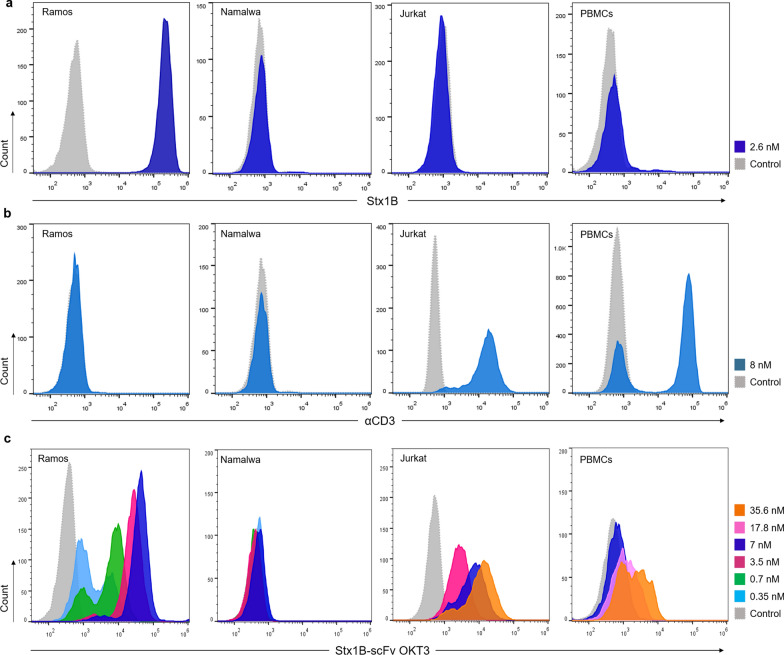Fig. 4.
Binding of Stx1B, anti-human CD3 antibody and Stx1B-scFv OKT3 lectibody to tumor and effector cells. a Representative histograms of flow cytometry analysis of gated living Ramos, Namalwa, Jurkat T cells and PBMCs from healthy donors incubated with 2.6 nM Stx1B-Cy5 for the evaluation of Gb3 abundance at the plasma membrane. b Representative histograms of flow cytometry analysis of gated living Ramos, Namalwa, Jurkat T cells and PBMCs incubated with 8 nM anti-human CD3 Alexa-Fluor® 647 antibody and anti-human CD3 FITC antibody (αCD3). c Histograms of fluorescence intensity of gated living Ramos, Namalwa, Jurkat T cells and PBMCs incubated with increasing concentrations of Stx1B-scFv OKT3, detected by a fluorescent anti-6-His epitope tag AF647 antibody (dotted, grey: negative control; light blue: 0.35 nM; green: 0.7 nM; magenta: 3.5 nM; blue: 7 nM, pink: 17.8 nM; orange: 35.6 nM). Histograms show a dose-dependent trend in protein binding to the Gb3 antigen exposed at the surface of Ramos cells. Fluorescence intensity did not change following incubation of the lectibody with Gb3− Namalwa cells, which excluded unspecific binding of the conjugate to the cell surface. Binding of the lectibody to CD3 receptors was proven by dose-dependent shift in fluorescence intensity for the tested Jurkat T cells and PBMCs. The number of cells within the live population (y-axis) is plotted against the fluorescence intensity of a Stx1B-Cy5, b αCD3, c Stx1B-scFv OKT3 (x-axis)

